5. The Evil Dead (1981)
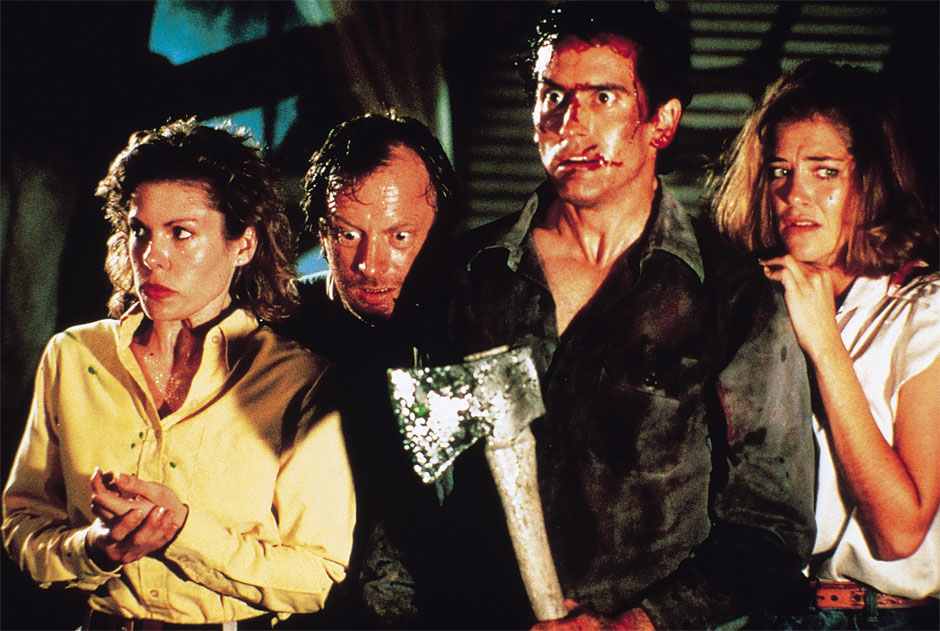
While Sam Rami didn’t invent the concept of having a cabin in the woods, The Evil Dead is the quintessential “cabin in the woods” movie. Made on a shoestring budget, the film showcased creative gore effects, innovative cinematography, and an audacious and gleeful attitude. Rami inspired a whole generation of gonzo filmmakers to, for lack of a better term, just go for it.
Evil Dead is a fixture in the early independent film scene. The film overcame its tight budget, inexperienced actors, and simplistic premise to deliver a unique blend of slapstick comedy, over-the-top gore, and claustrophobic existential horror. It paved the way for filmmakers like Peter Jackson, Edgar Wright, and other weirdos who came to the glorious realization that all they needed to make a horror movie was a camera, some corn syrup, and a unique vision.
The influence of Evil Dead doesn’t stop at a few gonzo filmmakers, however. The film popularized the “cabin in the woods” genre that has pervaded horror for the last few decades. The isolation, demonic forces, and existential trauma of The Evil Dead is directly responsible for films like Cabin Fever, the parody film Cabin in the Woods, and a plethora of other movies that use the setting to amazing effect. As the series progressed, Evil Dead II redefined how silly a horror film could be. As a result, many films have blended physical comedy and horror in ways audiences couldn’t imagine. Some notable examples include Dead Alive, Tucker and Dale Vs. Evil, and Shaun of the Dead.
Evil Dead is also known for its DIY approach to horror, featuring innovative POV tracking shots and a near-unprecedented amount of gore. These feats were all done with glorious practical effects. It’s a landmark in throwback horror and is commonly referred to as one of the most successful cult films in history.
4. Re-Animator (1985)
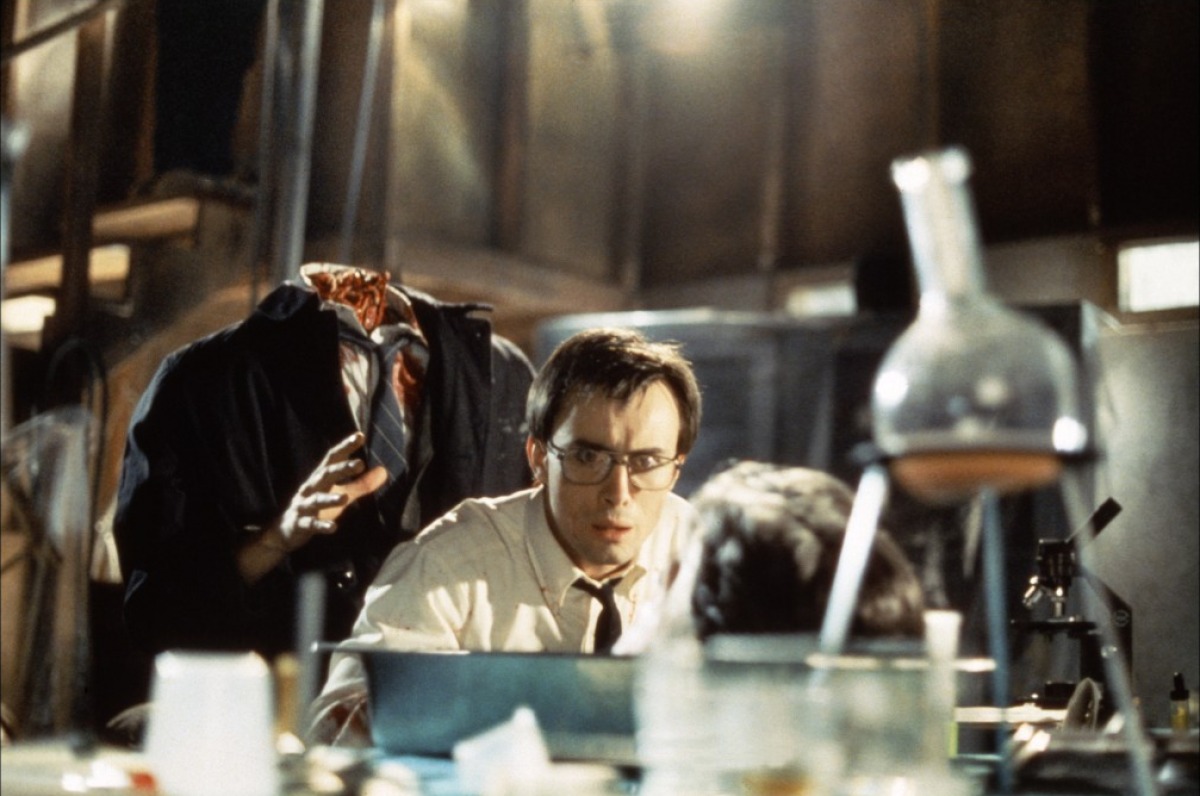
Lovecraft is notoriously hard to adapt. Cosmic horror is birthed in the mind, and a film adaptation is never going to reach the depths of darkness that the human imagination can reach. Despite this, Re-Animator managed to create a compelling film that both critics and gorehounds appreciated. Shot in just 18 days, the film boasts a unique blend of camp, cosmic horror, dry humor, and eye-popping special effects. The strong reactions the special effects elicited from filmgoers led to director Stuart Gordon often being referred to as DIY Cronenberg.
With the use of sound effects and visual imagery, Gordon created a unique imprint on the horror genre with a distinct visual style. This would inspire revivalist VHS horror junkie filmmakers to find their own unique styles, rather than bending to the genre’s conventions. Reanimator also stands as one of the best adaptations of Lovecraft. It is credited as one of the only movies to be able to successfully modernize his writings in the context of a film.
The particular blend of camp and horror was widely admired and imitated throughout the horror genre. This led to the renaissance of B-movie tributes in the late ’80s and ’90s. Some examples include From Beyond, Brain Damage, Frankenhooker, and Killer Klowns From Outerspace. But the film’s more significant contribution to the genre lies in how far it was willing to go. Re-Animator is an exercise in bad taste and excess. As such, it paved the way for filmmakers to continue pushing the boundaries on what could be acceptable. Initially given an X rating, the film played in theaters unrated and was eventually cut down with a sanitized and not nearly as exciting R version to premiere in stores that would refuse to stock unrated movies.
Since then, the film’s audacious nature has been surpassed by the likes of Harmony Korine, Rob Zombie, and other transgressive filmmakers. However, Re-Animator, with its glowing goo and science-gone-wrong plot, endures as a cult classic.
3. Cannibal Holocaust (1980)
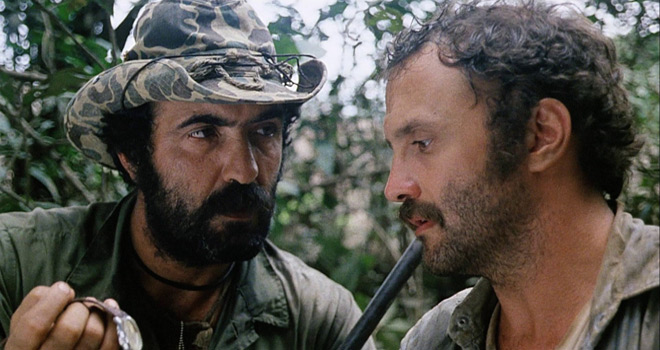
When the shocking film Cannibal Holocaust first premiered in Italy, no one had heard of the term “Found Footage horror film”. The Bair Witch Projects wouldn’t begin their ingenious viral marketing plan, including a website with fake police reports, until 1998. At this point, the only film that used a faux-documentary technique was The Connection, a drama about drug addiction. When Cannibal Holocaust was first shown, the violence seemed so realistic that the Italian magistrate seized the film. After enduring obscenity charges, the director had to prove that no people were murdered during the making of the film.
Set and filmed in the Amazon forest, the movie followed a crew of American documentary filmmakers who set out to observe and film an indigenous cannibal tribe. After the crew disappears, a New York University anthropologist leads a rescue mission to find the missing film crew. The mission fails, but the anthropologist returns with “found footage” depicting the murder and cannibalization of the film crew.
Director Ruggero Deodato was eventually cleared of murder accusations, after demonstrating how the special effects of the film were created. Deodato also had to bring the actors of the film before an Italian court to prove they were still alive. However, the controversy with the film lived on, due to the extreme violence, depiction of sexual assault, and the genuine slaughter of animals including a giant sea turtle, a squirrel monkey, and a pig. Many countries banned the film, including Italy, Australia, Norway, and New Zealand.
Despite all the controversy, the film birthed one of the most popular genres of horror today: the found footage film. This technique was popularized by the Blair Witch Project and has since been used as the main crux of the popular series Paranormal Activity. Other films that have used this technique include REC, Cloverfield, Troll Hunter, and a slew of 2010s horror films. The genre has since run out of steam as the public has been desensitized to the concept. But many films still manage to cleverly use the premise to create engaging stories, with clever marketing schemes to promote the film as real. Though some films have used this to varying degrees of success, no found footage horror has achieved the sheer amount of shock and impact as Cannibal Holocaust.
2. Friday the 13th (1980)
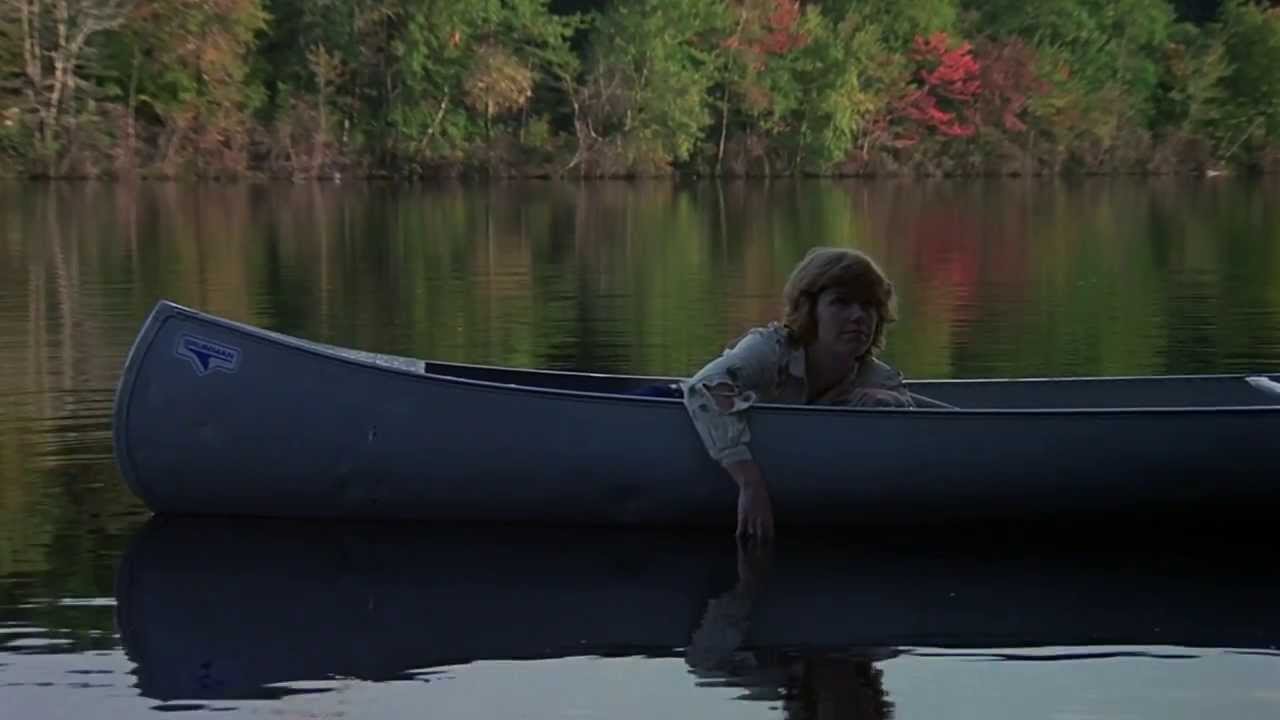
Psycho may contain one of the earliest slasher scenes in film history, but Friday the 13th really created the “slasher film” as we know it today. The film features a killer with an animalistic desire to murder, a penchant for stalking, and a bunch of disposable teens who seemingly only exist to die. The formula Friday the 13th crafted is one of the most recognizable formulas in film history.
The slasher genre was jumpstarted by John Carpenter’s Halloween. The release of Halloween ushered in “The Golden Age” of slasher films, from 1978-1984. While the early films in this age were largely midnight movie drive-in features, Friday the 13th coincided with the election of Ronald Reagan. As a result, it was at the epicenter of discourse surrounding the rise of graphic violence in film.
Part of the reason Friday the 13th got so much flack was that it was distributed by Paramount Pictures. Paramount was heavily criticized for ushering in a new standard of violence in mainstream films. But the criticisms lobbied at Paramount and the filmmakers didn’t stop the ripple effect that Friday the 13th had on the genre. The setting of a summer camp was often imitated by films like Sleepaway Camp, Twisted Nightmare, Madman, and many others. However, the largest influence was the codification of the sex equals death formula. With camp counselors being picked off one by one, either after using drugs or having sex, the film created a new cinematic language in horror. The sex equals death formula has been endlessly recreated, ripped off, subverted, and parodied.
The box office success of the film prompted an increase and eventual saturation of slasher films. Studios greenlit movies like Prom Night, The Fog, and The Burning. Paramount distributed My Bloody Valentine in hopes that it would replicate the success of Friday the 13th. While these films largely failed, the Friday the 13th franchise has come a long way since the first film. It spawned nine sequels, a remake, and the infamous Freddy Vs. Jason crossover. Along the way, the film picked up and codified other famous tropes. Some examples include the now-iconic hockey mask, POV tracking shots from the killer’s perspective, and a minimalist soundtrack featuring distorted chants
Though the film was at the time credited with nearly killing off the slasher genre, it now stands as one of the most iconic horror movies of all time.
1. The Shining (1980)
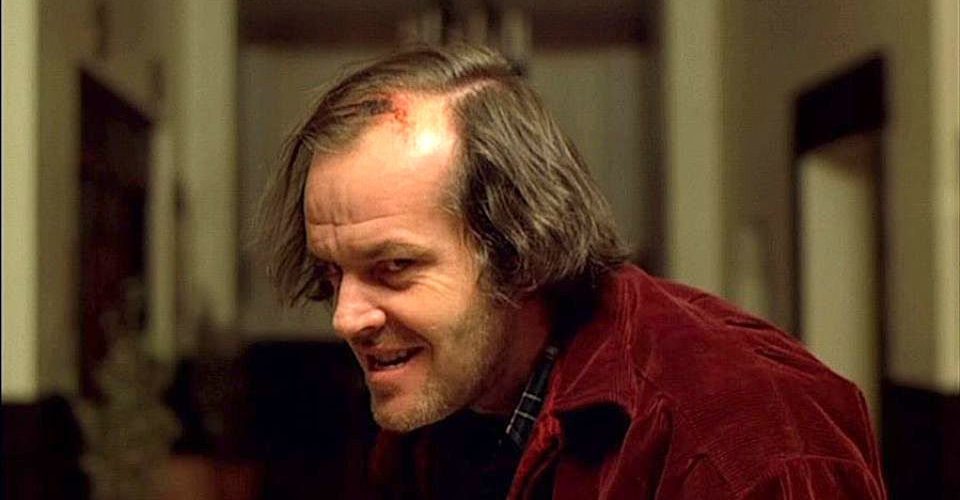
It’s hard to overstate just how influential the Shining was to the horror genre. The film has been picked apart, endlessly reference, and obsessed over. It’s not only the career-defining film of both Jack Nicholson and Shelly Duvall but is also one of the most notable horror films to be helmed by a celebrated auteur director. The Shining was Stanley Kubricks second to last film, a celebrated entry in a filmography that stands as one of the greatest American filmographies in history.
In light of the endless accolades and pop culture permutation, it’s hard to believe that the film was not initially well-received. Part of the disdain was how “weird” it was. The film featured a slow pace, which was not the norm for horror movies of the time. It also made radical departures from the much loved Stephen King novel, which angered both fans of the book and King himself. As a result, The Shining was perplexing to critics. It was the only film of Kubrick’s after his 1959 noir film The Killing to not be nominated for a single Academy Award.
Despite the initial misgivings, the film has been subject to immense critical reappraisal. It is now credited for revolutionizing some of the most exciting filming techniques of the 20th century. This includes Steadicam tracking shots and one of the single most effective uses of Mise-en-scène in film history by way of the iconic Overlook Hotel.
The film’s ripple effects were not seen immediately, as Kubrick is notoriously an inimitable filmmaker. However, a wide-ranging variety of films and television cite The Shining as an influence on their work. This includes There Will be Blood, Twin Peaks, and even Toy Story 3. In more recent years, the film stands as an anchor point for the recent rise in “prestige horror”. Prestige horror is a term attributed to movies like Hereditary, Get Out, The Babadook, and generally most of A24’s horror output. These movies are often viewed as “elevated horror”, or horror films that don’t just rely on violence or jump scares. The term Prestige Horror rubs many horror fans the wrong way, as it erases the complexity and social commentary present in horror films since the genre began. But regardless of how one feels about the term, The Shining helped create a group consciousness around subtext in horror. The film has sparked an immeasurable amount of conversation around narrative ambiguity, Native American allegory, and other wide-ranging interpretations regarding the social commentary and symbolism present in the film.
Now seen as a masterpiece of the genre, The Shining stands as one of the most unnerving films in horror history. It is often referred to in pop culture, even becoming the main reference point for the line “Here’s Johnny”, even though the line originated from Johnny Carson’s wildly popular Tonight Show. Though the horror genre is often unfairly maligned, The Shining represented a significant step forward for the genre. The film paved the way for modern horror movies to create a new golden age of horror, one that isn’t immediately dismissed as exploitation.